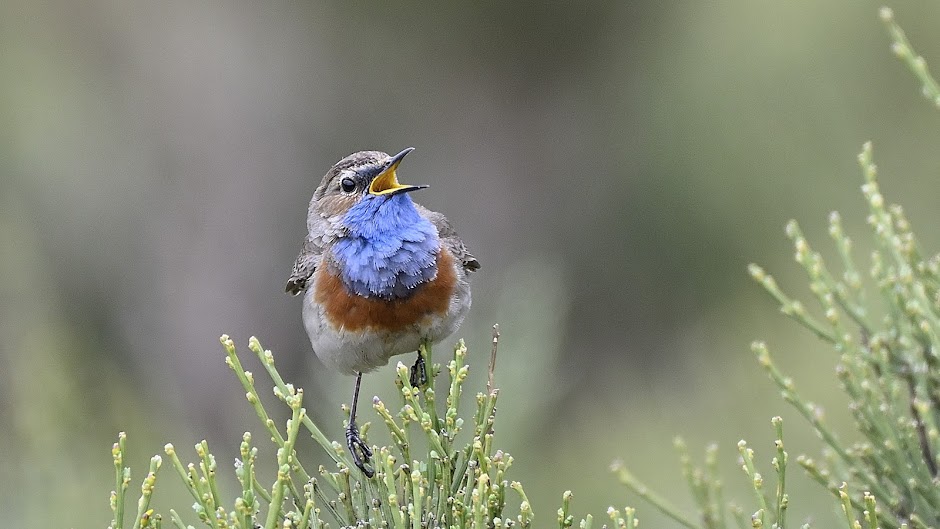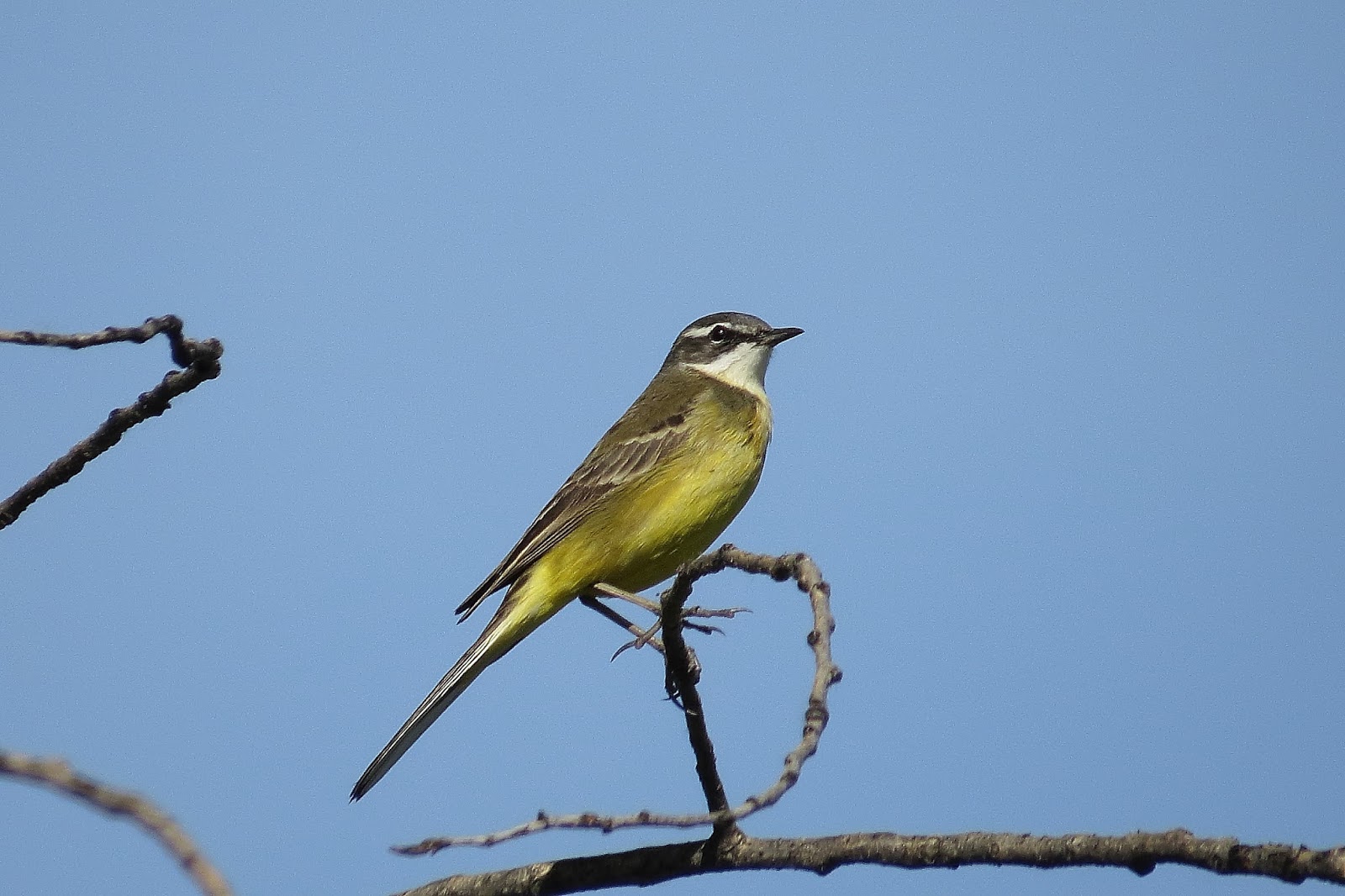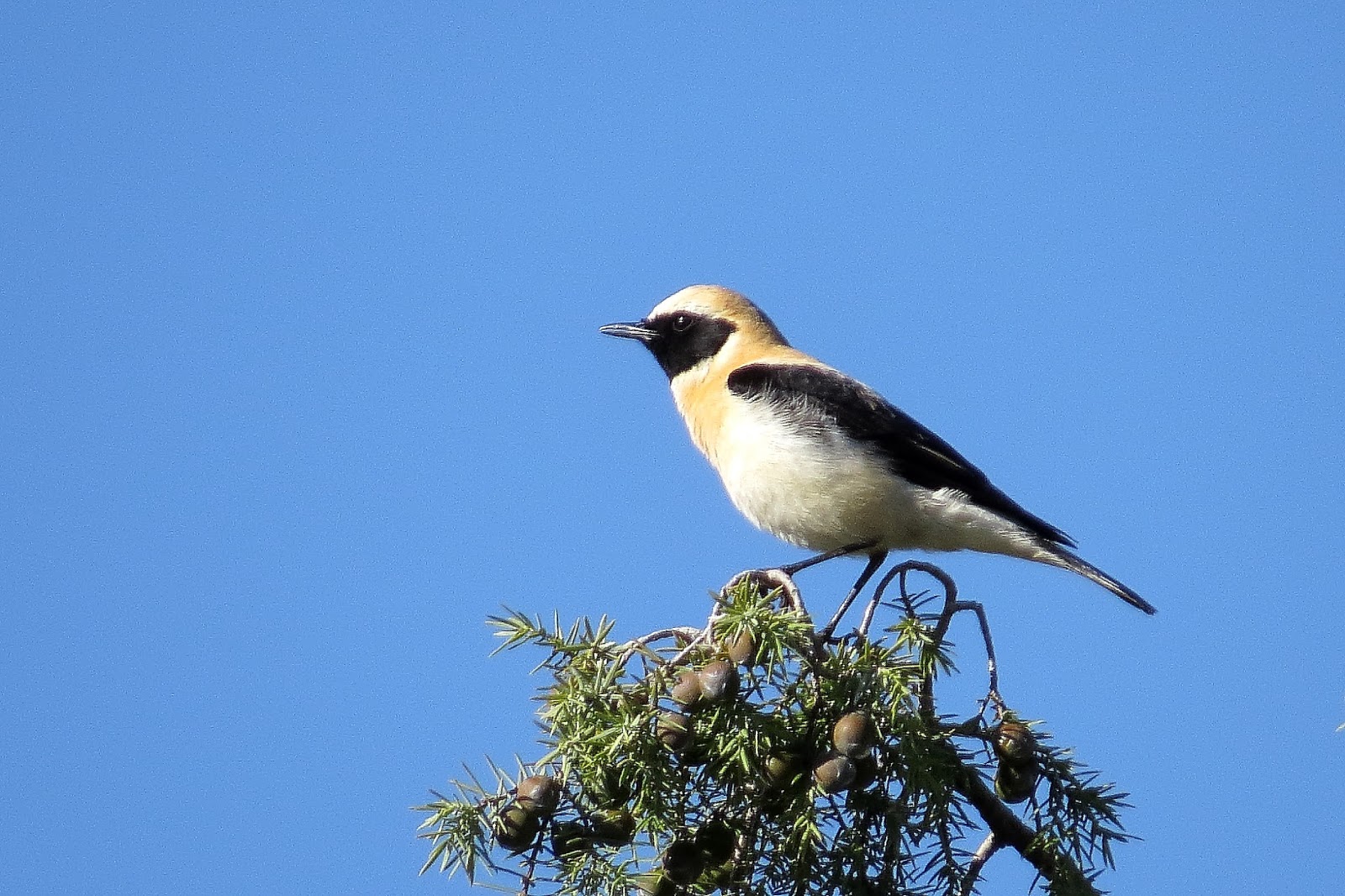Esta mañana he ido de paseo y al ser un tanto atípico y he decidido compartirlo con todos vosotr@s. Con un día estupendo y con una buena temperatura llegué a mi punto de destino sin sospechar que iba a tener la suerte de observar aves poco comunes para la Comunidad de Madrid. En total el paseo duró dos horas y media y no fue más largo pues tenia que hacer otras cosas.
This morning I went for a walk and has been so atypical that I have decided to share it with all of you. With a great day and good temperature I reached my destination without suspecting I would be lucky to observe rare birds at the Community of Madrid. In total the tour lasted two hours and a half and was not longer because I had to do other things.
A parte de las aves observadas lo más maravilloso fue cuando me dí cuenta que un zorro estaba intentando cazar una de las tres espátulas comunes (Platalea
leucorodia) que tenia enfrente. Además de lo raro que es ver estas aves en la Comunidad también me sorprendió ver un grupo de cinco archibebes claros (Tringa
nebularia) y un ibis sagrado (Threskiornis aethiopicus).
Besides of the birds observed the best time was when I realized that a Red Fox was trying to catch one of the three Eurasian Spoonbills that I had in front. Apart from been rare to observe these birds in the Community I was also surprised to see a group of five Greenshank and a Sacred Ibis.
Nada más bajarme de la furgoneta me encontré con este mirlo común (Turdus
merula).
Just I get off of the van I found this Blackbird.
Y con varios cucos comunes (Cuculus
canorus). También vi dos machos de oropéndola (Oriolus
oriolus) y oí a un torcecuello euroasiatico (Jynx torquilla) que no paraba de cantar.
And with several Common Cuckoo. I also saw two male of Golden Oriole and I heard a Eurasian Wryneck which dis not stop singing.
Y a un Martinete común (Nycticorax
nycticorax).
And a Night
Heron.
Aunque ya había visto a las espátulas comunes desde lejos (Platalea leucorodia) me dí cuenta que en su dirección iba este zorro rojo (Vulpes vulpes). Gracias a Dios que ellas también se dieron cuenta de su presencia.
Although I had already seen the Eurasian Spoonbills from afar I realized that on their direction was going this Red Fox. Thanks God that they too became aware of it presence.
En total había tres espátulas comunes (Platalea leucorodia) y al llegar a casa y ver las fotos, me di cuenta que una de ellas estaba marcada con una anilla cerrada color amarillento en su pata izquierda con las letras ABHP y en su pata derecha otra también cerrada y mas pequeña de color rojizo.
In total there were three Eurasian Spoonbills and when I get home and see the photos I realized that one of them was marked with a closed ring yellowing on its left leg with ABHP letters and in his right leg another closed ring smaller and reddish.
El zorro al darse cuenta que había sido descubierto optó por pasar de largo.
The fox realizing it had been discovered opted to pass by.
Pero las espátulas comunes (Platalea leucorodia) se quedaron un rato pendientes de sus movimientos.
But the Eurasian Spoonbills stayed pending its movements for a while.
Una última mirada a lo que podía haber sido una buena comida antes de desaparecer entre las altas hierbas.
A last look at what could have been a good meal before disappearing into the tall grass.
Otra sorpresa del paseo fue encontrarme con un grupo de cinco archibebes claros (Tringa
nebularia). Estaban dispersos en un pequeño charco.
Another surprise of the walk was finding a group of five Greenshanks. They were scattered in a small puddle.
Y la más rara de todas ellas fue ver como este ibis sagrado (Threskiornis aethiopicus) salia de otra charca pero cuando me quise dar cuenta ya estaba demasiado lejos para hacerle una buena foto.
And the rarest of all of them was seen as this Sacred Ibis came out of another pond but when I realize what was going on it was too far away to make a good picture.
Los archibebes claros (Tringa nebularia) iban de una charca a otra.
The Greenshanks were going from pond to pond.
Al poco rato pasó este buitre negro (Aegypius
monachus).
Soon passed this Monk Vulture.
Y también había algunos chorlitejos chicos (Charadrius
dubius).
And there was also some Little
Ringed Plovers.
Y también vi a este alcaudón común (Lanius
senator).
And I also spotted this Woodchat Shrike.
Había bastantes lavanderas boyeras (Motacilla
flava).
There were several Yellow Wagtails.
Al igual que ocurría con las garzas imperiales (Ardea
purpurea).
As same as with Purple Herons.
Y ya cuando me dirigía a la furgoneta me entretuvo este carricero común (Acrocephalus
scirpaceus) con su canto. También estaba anillado pero es imposible leer la inscripción.
And when I went to the van this Reed Warbler entertained me with his singing. Was also ringed but it's impossible to read the inscription.
Y para finalizar con el relato de este breve pero intenso e inesperado paseo os dejo con esta preciosa garza real (Ardea
cinerea). Ojalá disfrute de muchas mañanas como ésta.
And to end with this story of a brief but intense and unexpected walk I leave you with this beautiful Grey Heron. I wish I could have many mornings like this.





































































































